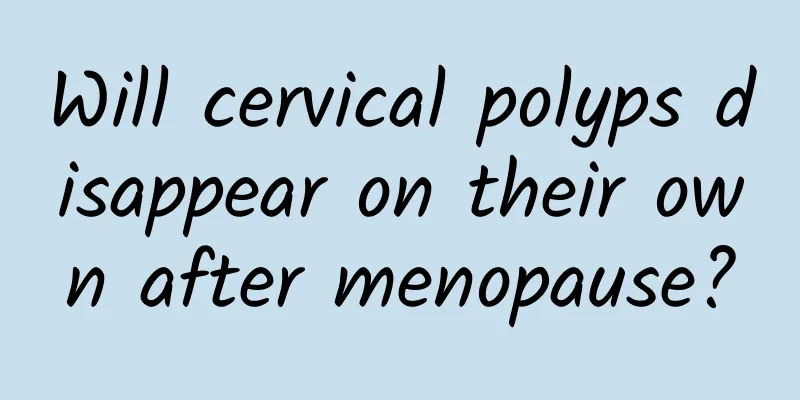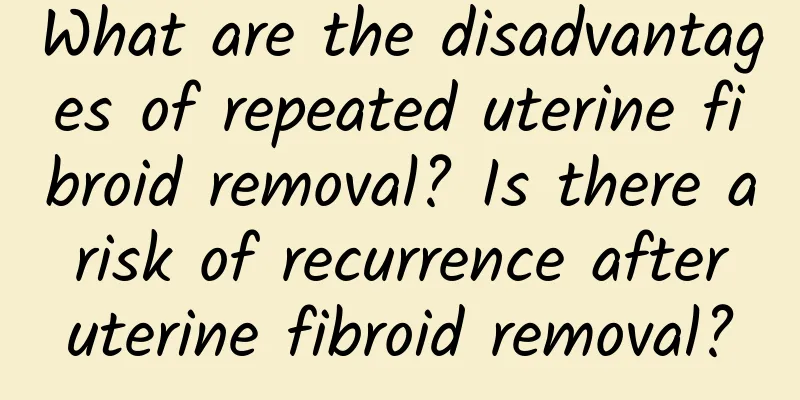Will cervical polyps disappear on their own after menopause?

|
Cervical polyps may disappear on their own after menstruation stops, but this varies from person to person and depends on the size and type of the polyp and your individual health. Generally, smaller functional polyps may resolve on their own after hormone levels change, while larger or symptomatic polyps usually require medical intervention. 1. Causes of cervical polyps The formation of cervical polyps is related to many factors. Genetic factors may make individuals susceptible to polyps; environmental factors such as long-term inflammatory stimulation or infection such as chronic cervicitis may also induce polyps; physiological factors such as hormone level fluctuations, especially high estrogen levels, are often related to the occurrence of polyps; trauma such as multiple births or cervical surgery may damage cervical tissue and increase the risk of polyps; certain pathological conditions such as cervical glandular cysts or cervical precancerous lesions may also be accompanied by the appearance of polyps. 2. Treatment method For cervical polyps that do not disappear after menopause, it is recommended to choose the following treatment methods according to the specific situation: Drug treatment: The use of progesterone drugs to regulate hormone levels may help the regression of functional polyps; antibiotic treatment can be used to eliminate infectious inflammation; non-steroidal anti-inflammatory drugs can relieve symptoms. Surgical treatment: Hysteroscopic polypectomy is a commonly used and minimally invasive method; electrosurgical resection is suitable for larger polyps; cold knife resection can be used for complex cases, and regular follow-up is required after surgery. Lifestyle adjustments: Pay attention to personal hygiene and avoid using irritating lotions; maintain moderate exercise to enhance immunity; consume more foods rich in vitamins and antioxidants, such as dark vegetables and berries. 3. Special circumstances If irregular bleeding, abnormal secretions or continued enlargement of polyps occur after menopause, you should seek medical attention in time to rule out the possibility of malignant transformation. For recurrent polyps or other cervical lesions, a personalized treatment plan should be developed according to the doctor's advice, and other treatment methods should be combined if necessary, such as cryotherapy or laser therapy. The management of cervical polyps needs to be combined with individual conditions and regular gynecological examinations. Whether it disappears after menopause depends on many factors. It is recommended to observe or treat under the guidance of a professional doctor to avoid blindly waiting and delaying the disease. |
<<: How to treat moderate cervical erosion
>>: How to treat functional uterine bleeding
Recommend
Understand the conventional treatment methods for ectopic pregnancy
Ectopic pregnancy is a very harmful gynecological...
What is intramural uterine fibroids? How to treat intramural uterine fibroids?
Uterine fibroids must pay attention to rest, do n...
Does congenital absence of vagina affect pregnancy?
Does congenital absence of vagina have any impact...
What is the key to preventing cervicitis? Is unclean sexual life the cause of cervicitis?
Acute cervicitis is less common than chronic cerv...
1 in 2 adults is obese! Peking University Health Science Center helped 3,000 people lose weight, losing more than 67 tons of fat in 10 years
Unbearable weight! According to statistics from t...
Medicinal and dietary therapy for amenorrhea due to qi stagnation and blood stasis syndrome
Shi is a person with a bad temper and straightfor...
What are the health care measures for uterine effusion?
Uterine effusion is not a common gynecological in...
5 intermittent fasting cooking secrets revealed!
The 6 key points of intermittent fasting mention ...
What test can accurately detect high prolactin levels?
Hyperprolactinemia is a very common disease in wo...
Does uterine fibroids require surgery? What is the best thing to eat after uterine fibroid surgery?
Uterine fibroids, also known as uterine leiomyoma...
A Chongqing woman was diagnosed with advanced cervical cancer without any pain or itching. The reason was that she made 3 mistakes
In the bustling mountain city of Chongqing, Ms. L...
What to do with uterine fibroids
What to do about uterine fibroids? Uterine fibroi...
Increased vaginal discharge does not necessarily mean cervicitis
Leucorrhea is a mixture of vaginal mucosal exudat...
Will pelvic inflammatory disease affect pregnancy? It is common in women of childbearing age.
Pelvic inflammatory disease is common in women of...
Can diabetes be cured? Do only fat people get diabetes? Pharmacists solve five myths at once
Diabetes has become the new national disease! Acc...









